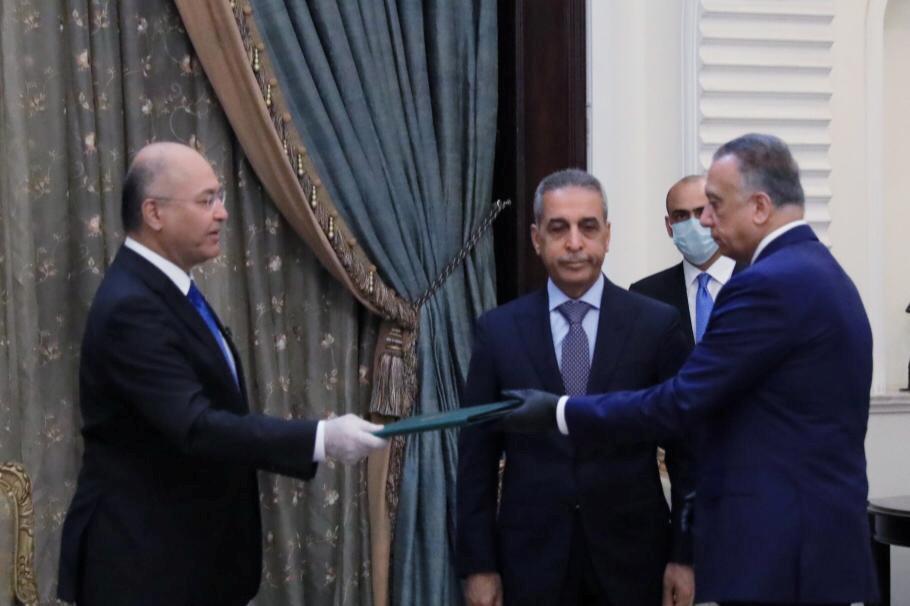Will Mustafa Al-Kadhimi save Iraq?
https://arab.news/yzmg7

There are a few signs in Baghdad that seem to suggest change is in the air. For example, a giant mural near Baghdad International Airport of Iranian Gen. Qassem Soleimani, close to the place where he was killed by a US drone strike in January, has been removed.
In addition, security forces raided the headquarters of the Tharullah (God’s Revenge) party in Basra, which is openly loyal to Iran and had been threatening Iraqi protesters and Americans.
The new development in Iraq that led to these actions was the election of Prime Minister Mustafa Al-Kadhimi. The majority of Iraqi factions and regional powers, as well as the US and Russia, seem to agree that, this time, Baghdad has a leadership they can work with.
His rise in the Iraqi political arena coincides with the start of the countdown to the US presidential election, the result of which will have a decisive effect on Iran and its relationship with other countries in the region, including those in the Gulf.
Al-Kadhimi’s most difficult tasks will be to save Iraq from Tehran, which wants to control its neighbor, and to steer his country away from the dangers resulting from the US-Iran conflict. This escalated after Washington revealed Tehran’s intention to cause political and security chaos in Baghdad. Soon after, the US assassinated Soleimani, Iran’s most prominent military leader, and several militia leaders, which was followed by an escalation of protests against the American military presence in Iraq. This was the highest level of confrontation on Iraqi soil.
Soon after Al-Kadhimi was confirmed as prime minister, the US government announced that, as an exception to its sanctions, it had given Iraq permission to buy oil from Iran. The move was designed to encourage the Iranians to curb their disruptive activities in Iraq.
However, Al-Kadhimi inherits the same problems that faced his predecessors, Haider Abadi and Adel Abdul Mahdi. Iran has infiltrated Iraq’s security, military and religious institutions. Sectarian and regional rifts have grown and corruption has increased. Government fiscal deficits have multiplied as a result of the collapse in oil prices and the recent street protests, which could return at any time.
The new prime minister needs to build public confidence in the government and secure the cooperation of parliament to meet the demands of demonstrators. He will also have to quickly control the militias and “restore prestige to the military and security institutions,” as he himself said on Tuesday.
The list of expectations among Iraqis is a long one, and it will be no less difficult for him to meet the expectations of regional and international powers.
The resolution of Iraq’s crises will help the region emerge from a world of chaos.
Abdulrahman Al-Rashed
However, what Al-Kadhimi has in his favor, which puts him in a better position than his predecessors, is that he came to power without a history of prior feuds or disagreements. His relationships with all sides, including warring parties, are good.
This places him in a good position to move forward in the next few months by taking advantage of this goodwill, and the willingness of most politicians to cooperate with him, to free Iraq from the impasse it has been stuck in for years.
The recovery and rehabilitation of Iraq is in the interests of everyone, and would offer hope for others in a region that is experiencing unrest on a scale it has not experienced for decades. The resolution of Iraq’s crises will help the region to emerge, finally, from a world of chaos.
- Abdulrahman Al-Rashed is a veteran columnist. He is the former general manager of Al-Arabiya news channel, and former editor-in-chief of Asharq Al-Awsat. Twitter: @aalrashed









































